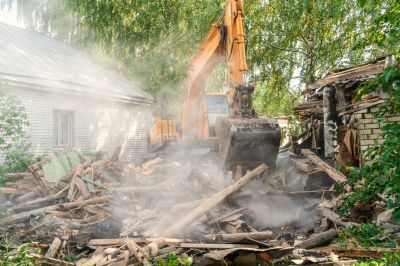Favorite Tools for Demolition Service Operations
Identify trusted equipment options that help demolition crews perform effectively and safely on every job site.
 Demolition work in Abilene, TX, requires a range of specialized products designed to handle various aspects of tearing down structures safely and efficiently. From handheld tools to heavy machinery, the right equipment ensures that demolition projects are completed with precision and minimal risk. Understanding the different types of products available can help contractors and DIY enthusiasts select the appropriate tools for their specific needs.
Demolition work in Abilene, TX, requires a range of specialized products designed to handle various aspects of tearing down structures safely and efficiently. From handheld tools to heavy machinery, the right equipment ensures that demolition projects are completed with precision and minimal risk. Understanding the different types of products available can help contractors and DIY enthusiasts select the appropriate tools for their specific needs.
Top Overall Option
Heavy-Duty Hydraulic Demolition Hammer
A versatile hydraulic demolition hammer is a key piece of equipment for breaking through concrete, asphalt, and other hard materials. It offers powerful impact force combined with ease of use, making it suitable for both large-scale projects and detailed demolition work. Its durability and adaptability make it a reliable choice for various demolition tasks in Abilene, TX.
Types of Products For Demolition Service
Hydraulic Breakers
Hydraulic breakers are attachments for excavators that deliver high-impact blows to break concrete, rock, and other tough materials.
Demolition Hammers
Handheld pneumatic or electric hammers used for breaking up concrete and masonry in smaller or more precise demolition tasks.
Sledgehammers
Traditional heavy hammers suitable for manual demolition work, especially in confined spaces or for smaller tasks.
Pry Bars and Crowbars
Tools used for prying apart materials, removing nails, and leveraging demolition components.
Reciprocating Saws
Power saws equipped with demolition blades for cutting through wood, metal, and other materials during teardown.
Concrete Crushers
Machines designed to crush concrete debris into manageable sizes for removal or recycling.
Excavators with Demolition Attachments
Heavy machinery fitted with attachments like shears, grapples, or crushers for large-scale demolition.
Safety Gear
Protective equipment including helmets, gloves, goggles, and respiratory masks to ensure worker safety.
Dust Suppression Systems
Devices that help control dust during demolition, improving visibility and safety.
Wheelbarrows and Debris Containers
Tools for transporting and managing debris efficiently on-site.
Portable Generators
Power sources for equipment in locations without readily available electricity.
Vibratory Plate Compactors
Machines used for compacting soil or debris after removal to prepare the site for future use.
Hydraulic Spreaders
Tools used for spreading and leveling materials during demolition cleanup.
Wire Cutters and Plier Sets
Hand tools essential for cutting rebar, wiring, and other metal components.
Lifting Slings and Chains
Equipment used for lifting and maneuvering heavy debris or structural elements safely.
Popular Choices
Portable saws suitable for cutting through various materials with ease.
Lightweight and powerful tools ideal for breaking up concrete and asphalt.
Smaller excavators with demolition attachments, perfect for tight spaces.
Essential protective gear for head safety during demolition activities.
Tools designed for breaking through tough materials with precision.
Versatile drills for creating holes or removing fasteners in demolition sites.
Equipment to help manage dust and debris during demolition work.
Protective gloves to safeguard hands during manual demolition tasks.
Attachments for loaders and excavators to efficiently remove concrete debris.
Attachments for cutting and crushing metal and other materials.
Machines used for compacting soil and debris after demolition.
Lighting solutions to ensure visibility in low-light demolition environments.
Tools for managing reinforcement bars during structural demolition.
Equipment for removing flooring materials efficiently.
Systems for safely directing debris from upper levels to ground level.
Tools used for surface preparation and cleaning during demolition.
Safety is paramount in demolition activities, which is why durable protective gear is essential. Items such as helmets, gloves, eye protection, and respiratory masks play a critical role in safeguarding workers from debris, dust, and potential hazards. Additionally, specialized tools like hydraulic breakers and demolition hammers are commonly used for breaking through concrete, brick, and other tough materials.
For larger scale projects, heavy machinery such as excavators equipped with various attachments can significantly increase productivity. These machines are capable of handling large demolition tasks, including tearing down entire structures or removing substantial debris. Smaller, portable tools like sledgehammers and pry bars are often used for more detailed work or in confined spaces.
Choosing the right products depends on the scope of the project, safety requirements, and the materials involved. Proper maintenance and adherence to safety standards are also crucial to ensure smooth operations. With the right combination of tools and safety equipment, demolition work in Abilene can be performed efficiently while minimizing risks to workers and surrounding structures.
Key Buying Considerations
- Project scale and scope to determine the appropriate size and power of equipment needed.
- Material types involved in demolition, such as concrete, metal, or wood, to select suitable tools.
- Safety features and certifications to ensure compliance with safety standards.
- Portability and ease of transportation for equipment if working in multiple locations.
- Power source availability, whether electric, pneumatic, or hydraulic, in your work area.
- Durability and build quality of tools for long-term use in demanding environments.
- Compatibility of attachments and accessories with existing machinery or hand tools.
- Budget constraints balanced with the quality and features of the equipment.
- Maintenance requirements and availability of replacement parts or service support.
- Environmental conditions, such as dust, moisture, or temperature, that may affect equipment performance.
- Operator training and ease of use to maximize safety and efficiency.
- Noise levels of equipment, especially in urban or noise-sensitive areas.
- Regulatory compliance and adherence to local safety regulations.
- Availability of rental options versus outright purchase for short-term projects.
- Additional features like dust suppression or vibration control that enhance safety and comfort.
